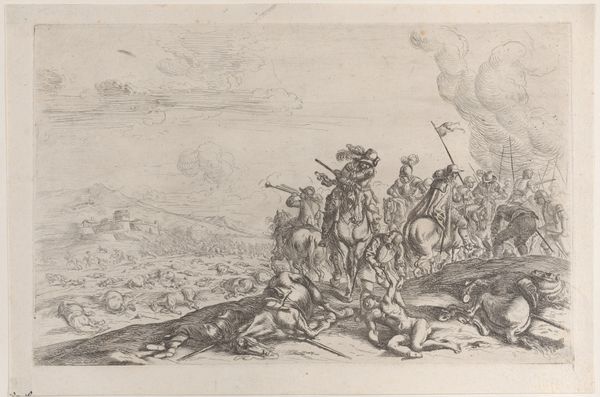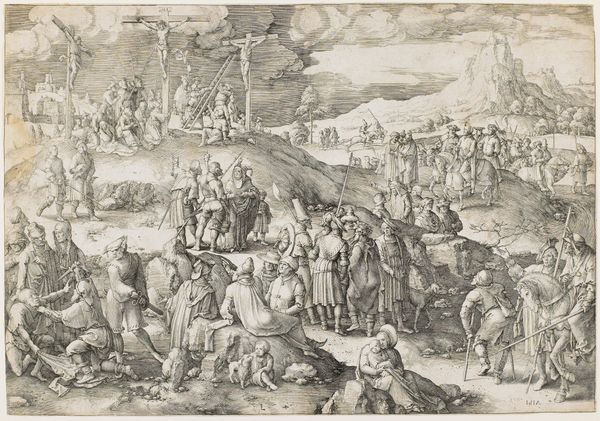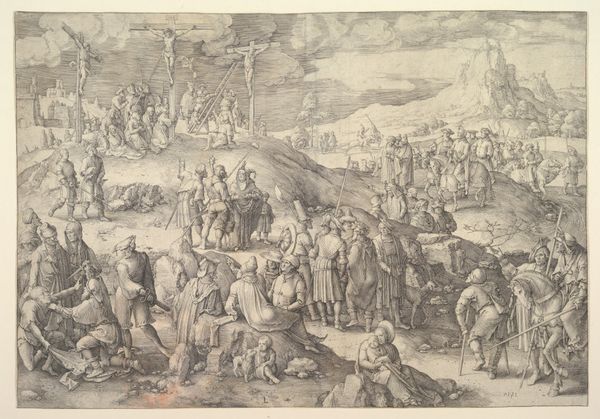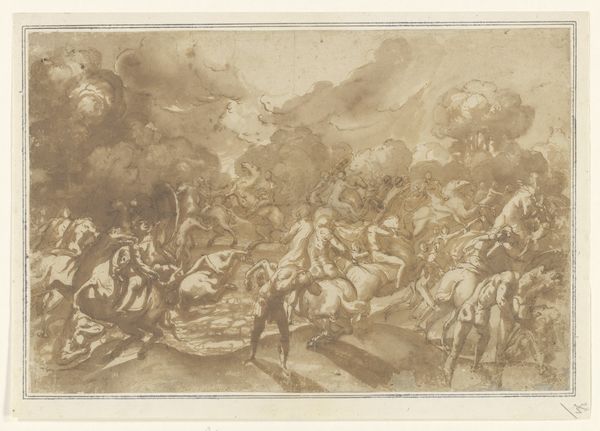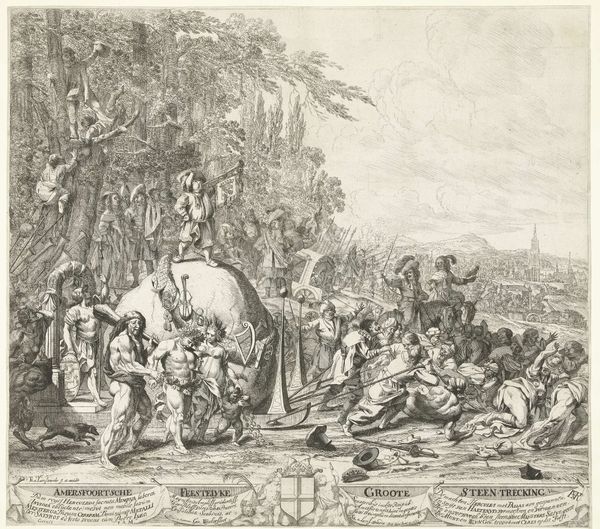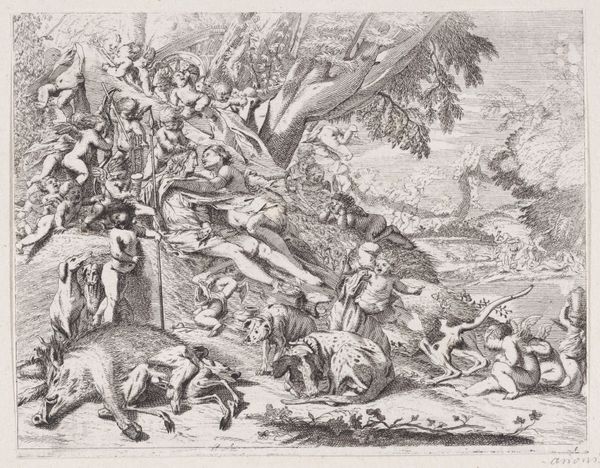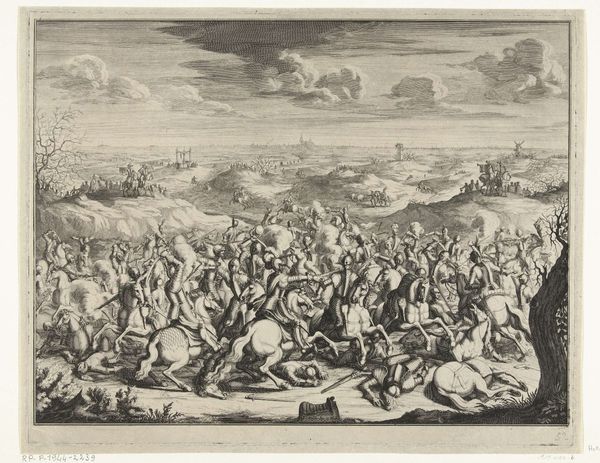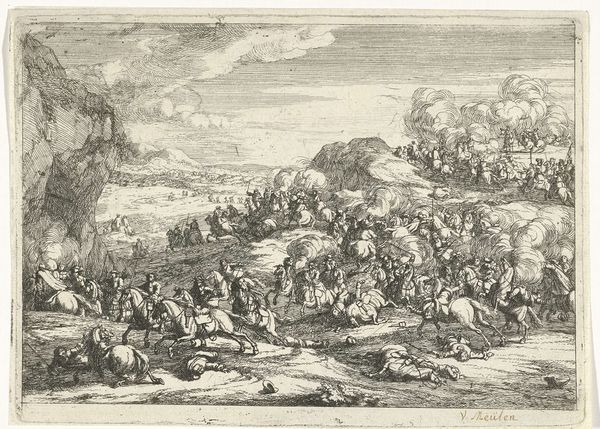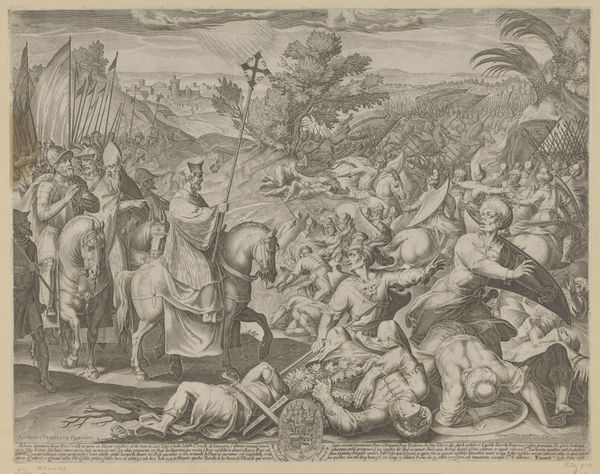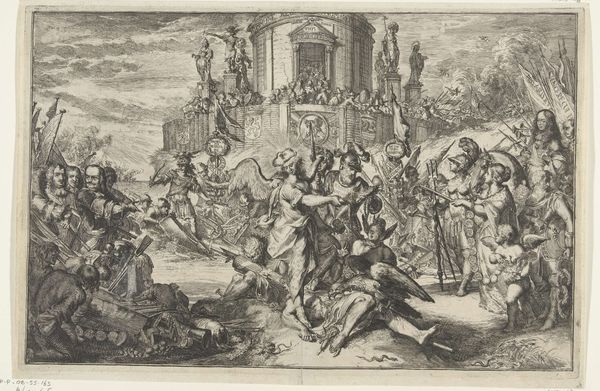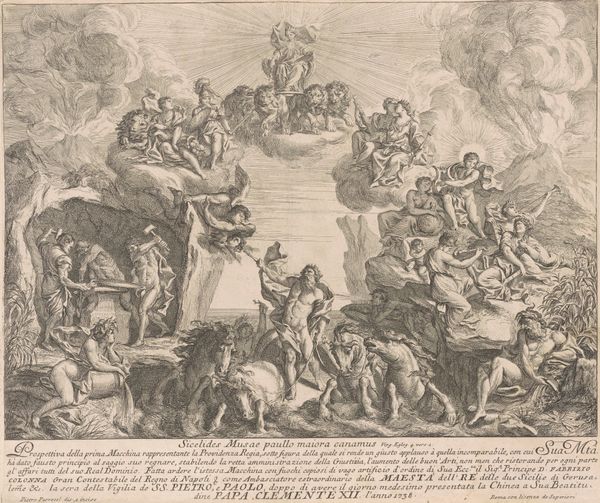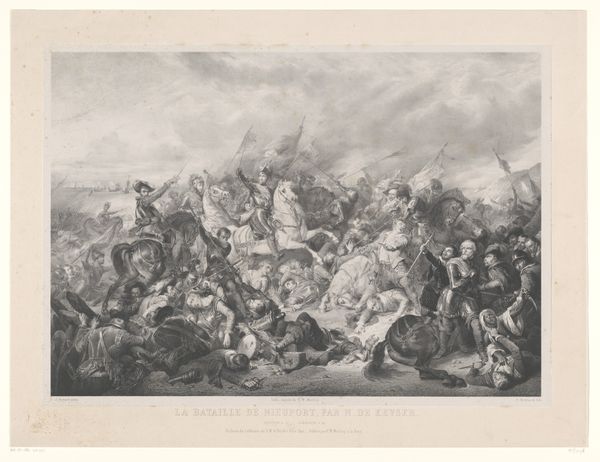
drawing, paper, ink
#
drawing
#
baroque
#
charcoal drawing
#
paper
#
ink
#
history-painting
Copyright: Public Domain
Curator: The sheer energy emanating from this work is palpable. This is Johann Elias Ridinger’s 1722 drawing, "Hannibal's Battle with the Helvetians," rendered in ink and charcoal on paper. It is currently housed in the Städel Museum. Editor: A maelstrom of bodies and implied motion. The swirling composition immediately suggests chaos, but there's also a deliberate arrangement of figures within it. What might the placement of figures signify in relation to power and hierarchy? Curator: Ridinger skillfully uses line and value to convey a sense of depth and frenzy. Observe how the foreground figures, defined with sharper lines and darker values, thrust forward. The composition funnels our eye into the vortex of the conflict. The lighter treatment of the background figures contributes to spatial recession, thereby magnifying the epic scale. Editor: Indeed, consider Hannibal's lasting symbol, a testament to defiance and strategic genius. Hannibal famously crossed the Alps with elephants to challenge Rome. This crossing, laden with historical weight, speaks to human will triumphing over natural barriers, even to this day. But why focus on the lesser known battle with the Helvetians? Curator: By situating the conflict amidst this dynamic landscape, Ridinger establishes the scene not just as an historical event, but as an instance of primal conflict within an overwhelming environment. It almost feels allegorical. Editor: The figures themselves are relatively generic. Do you find any deliberate symbolic figures to rally behind and explain its resonance to contemporaries? What details within this conflict would speak to cultural memory, shaping and reinforcing cultural narratives? Curator: This is where, I suppose, we should concede the limitations of formalism! Though pinpointing direct iconographic intention seems tenuous, one cannot deny the potent manipulation of visual language that Ridinger achieves in his work. The energetic cross-hatching, the calculated arrangement of forms – these elements serve not simply to depict but to actively create an immersive experience for the viewer. Editor: Precisely. So, what seems initially chaotic becomes a structured vision of warfare's timeless intensity, echoing across centuries. By focusing on specific symbolic interpretation, it leads me to rethink broader meanings that inform contemporary concerns of human perseverance. Curator: Ultimately, viewing this piece reminds me that we often bring our own biases when perceiving the objective forms within art, be that bias the intention for or against a search for symbolic meaning. Editor: Very true. Now I look forward to researching just how Ridinger's audience may have felt upon initially confronting the work.
Comments
No comments
Be the first to comment and join the conversation on the ultimate creative platform.
